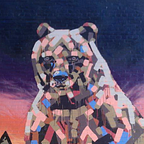Nvidia GTC — Metaverse/Omniverse
This year’s free online Nvidia AI conference had some great content on the Metaverse.
The Metaverse is basically a virtual reality version of the internet, where virtual worlds are all connected together.
Virtual worlds are the websites of the future.
These virtual worlds will be much bigger than our existing physical world.
We will use them to buy and sell virtual things, just like we use the internet to buy books and songs today. People have already been buying virtual houses, virtual real estate, and digital art. This trend will continue in the Metaverse as people buy virtual products, luxury goods etc.
Nvidia say there are 40 million 3D designers in the world, and presumably the Metaverse will significant increase demand for their services.
Virtual worlds will also be used to design, train and monitor things like factories and robots. There are huge benefits to testing a new factory layout, logistics algorithm, or a new robot design before physically building them.
Nvidia gave these larger scale examples:
- BMW designs a new factory.
- Ericsson builds a digital city to test where to put their 5G network towers.
- Siemens builds a digital Heat Recovery Steam Generator (HRSG) to predict when maintenance is needed on the boiler pipes.
These virtual environments are called digital twins.
Imagineering the Metaverse
Disney Imagineer Bei Yang shared a really interesting perspective on what the Metaverse is. You could say in a very literal way that the Metaverse is “the embodied internet”, or “a bunch of connected virtual environments”, but that doesn’t capture its true potential. He compares it to going back to 2005 just before the iPhone launched and asking somebody what the Internet is.
This mobile browser that I have in my pocket is going to completely disrupt the taxi industry.
There are thousands of things that have fundamentally changed as personal computing has evolved.
- Internet 1.0: people mostly observed. You turned on your computer, did something, then turned it off again. When the mobile internet came along, those interaction time slices became much shorter — you pull your phone out for 30 seconds, then put it away.
- Internet 2.0: this wave became more about interacting and participating. Social media arrived, and user generated content exploded.
- Metaverse: Bei says that in the Metaverse:
Your physical life and your digital life are going to be overlaid 100% on top of one other and will meld together
(This reminds me of the awesome book Daemon, which starts out as a detective thriller and turns into a futuristic vision of an augmented reality world.)
Bei talked about Disney’s Galactic Starcruiser, which is a multi-day, immersive experience where you live inside the story.
This reminds me of the MagiQuest experience at Great Wolf Lodge, where you can buy a wand and use it to complete a quest by exploring the hotel and finding various hidden artifacts. The wands appear to use infra red, and they allow you to physically interact with the environment. The kids and I really enjoyed it.
Omniverse
Nvidia Omniverse is a developer platform for 3D workflows for building virtual artifacts and environments. It will always be free for individual developers.
NVIDIA Omniverse™ is a scalable, multi-GPU real-time reference development platform for 3D simulation and design collaboration, and based on Pixar’s Universal Scene Description and NVIDIA RTX™ technology.
Nvidia showed lots of impressive Omniverse demos: coloring/texturing surfaces, augmented reality (AR).
Nvidia showed variations of this slide a few times, which highlights how people can live and work in their own physical or virtual worlds. These separate worlds and/or artifacts can be blended together in a shared world like the Metaverse.
Universal Scene Descriptor (USD) is the interface definition for exchanging scenes and content between virtual worlds.
Universal Scene Description (USD) is an easily extensible, open-source 3D scene description and file format developed by Pixar for content creation and interchange among different tools. As a result of its power and versatility, it’s being widely adopted, not only in the visual effects community, but also in architecture, design, robotics, manufacturing, and other disciplines.
USD is to Omniverse, what HTML is for websites.
One interesting observation is that many visual effects companies are experts in this kind of technology. Those skills are going to be in very high demand, and this creates new business opportunities for those companies, e.g. by selling “digital twin” construction or modeling services.
Omniverse offers collection of modules which enables you to build apps.
It sounds like Omniverse Community Exchange will be Nvidia’s own marketplace, but it wasn’t clear if that would interoperate with other marketplaces or virtual worlds.
There is likely a big incentive for a company to corner the marketplace for buying and selling virtual goods.
